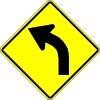Reaping Dividends
On 28 December, some 750,000 American workers received a foul Christmas present from the Bush administration. That day meant the end of a federal program to extend unemployment benefits for workers who had been out of jobs for 26 weeks or more.
The economic stimulus package that the Bush administration is about to propose will probably have some provision restoring those benefits to some of those unemployed workers. They will not be the real winners, however, of the proposal. The real winners will be the 750,000 or so American families with over $500,000 in annual income.
A key component to the economic stimulus proposal will be a provision that will severely cut federal income taxes on dividends. (Other components may include an acceleration of tax cuts already planned for future years into 2003 and 2004.) Reducing taxes on dividends can hardly be the easiest way to infuse money into the economy. After all, companies without profits are loathe to pay dividends because they need the cash, not because the taxation scheme is all wrong.
Restoring unemployment benefits would seem to be a more efficient way to prop up the economy. But if actual economic stimulus were foremost in the minds of the president and the Republican leaders in Congress, then the House and Senate would have postponed work on the Homeland Security bill, the basic purpose of which was to combine a hodgepodge of agencies into their own little bureaucracy. Instead, Congress would have stayed in session to find a way to keep the unemployment benefits checks flowing.
After a presidential campaign ringing with promises of tax relief for the middle class, the tax cut passed by Congress in 2001 was larded with provisions that benefitted Americans earning hundreds of thousands of dollars per year. Taxpayers in the old 15% tax bracket received a tax break limited to $300 to $600 per year. Taxpayers in the higher brackets received a four-step reduction in rates, from 28% to 25% for the second-lowest bracket, but from 39.6% to 35% for the millionaires in the highest bracket. Rich taxpayers got another piece of good fortune from the phase-out of the estate tax, which applies to estates with over $1,000,000 in assets.
To make the numbers behind the tax cut add up, the Republicans used two nasty tricks. First, to satisfy Congressional rules, the tax cuts expire in 2011. The calculations about the cost of the tax cuts disingenuously assume that 2011 would bring with it the tax code as it previously stood. In fact, President Bush has already called for making the tax cuts permanent. Second, the numbers rely on the alternative minimum tax affecting a growing number of middle-class taxpayers. The brackets and thresholds for this tax do not get adjusted for inflation, unlike most aspects of the tax code. Merely by having too many children, a middle-class family can be subject to this tax and miss many of the benefits promised under the Bush plan.
Reducing the tax rate on dividend income is really a hidden tax break for the richest taxpayers. IRS figures for 1999 show that dividend income was disproportionately earned by the richest taxpayers. The 0.44% of taxpayers with adjusted gross income of over $500,000 reported 15.9% of adjusted gross income but some 26.5% of all taxable dividend income. (The disparity is even greater for income from capital gains, which receives all sorts of beneficial treatment. In 1999, taxpayers with adjusted gross income of over $1,000,000 reported just about 50% of all long-term capital gains.)
Dividend income accrues disproportionately to the affluent for two reasons. First, dividends are paid on stocks and bonds and mutual funds, all of which attract investments by the wealthy. Second, many middle-class Americans do their investing through tax-deferred investments like pensions, 401(k) plans, or IRA plans, not through direct ownership.
President Bush has decried that dividends are taxed twice, once as part of a corporation's income and once by the individuals who receive them. The marginal federal income tax rate for most American corporations is 35%; in conjunction with the marginal tax rates for most investors, the double taxation would have a significant impact. But this analysis misses two salient points. First, a fair amount of dividend income is not taxed because the recipients own the underlying stocks or bonds through a pension plan or some other tax-deferred structure. Second, while corporations have a 35% marginal tax rate, their overall tax rates are seldom that high. Corporations have a slew of weapons at their disposal to reduce their taxes appreciably. A study issued in 2000 found that large American corporations had an average effective tax rate of only 20.1%.
The worst aspect of the president's plan to cut dividend taxes is that it conflates the financial markets with the nation's economy. The vast majority of stockholders are mere speculators, not entrepreneurs who established companies or venture capitalists who injected equity into a company to help it grow. Most stockholders merely buy shares in a company from other shareholders in a stock market. Their activity affects the economy only by indirect means.
Encouraging companies to pay stock dividends instead of hoarding cash may be good for shareholders, but it hardly constitutes wholesale stimulation of the economy. Dressing the proposal up in the guise of economic stimulation will not change what it is, a sop to the idle rich.



